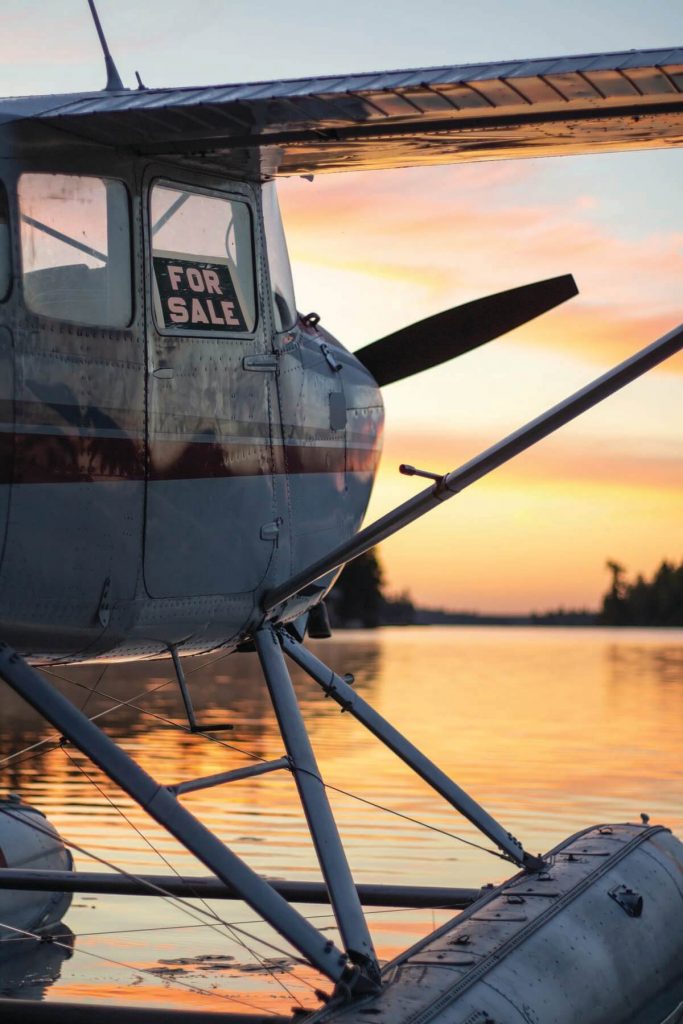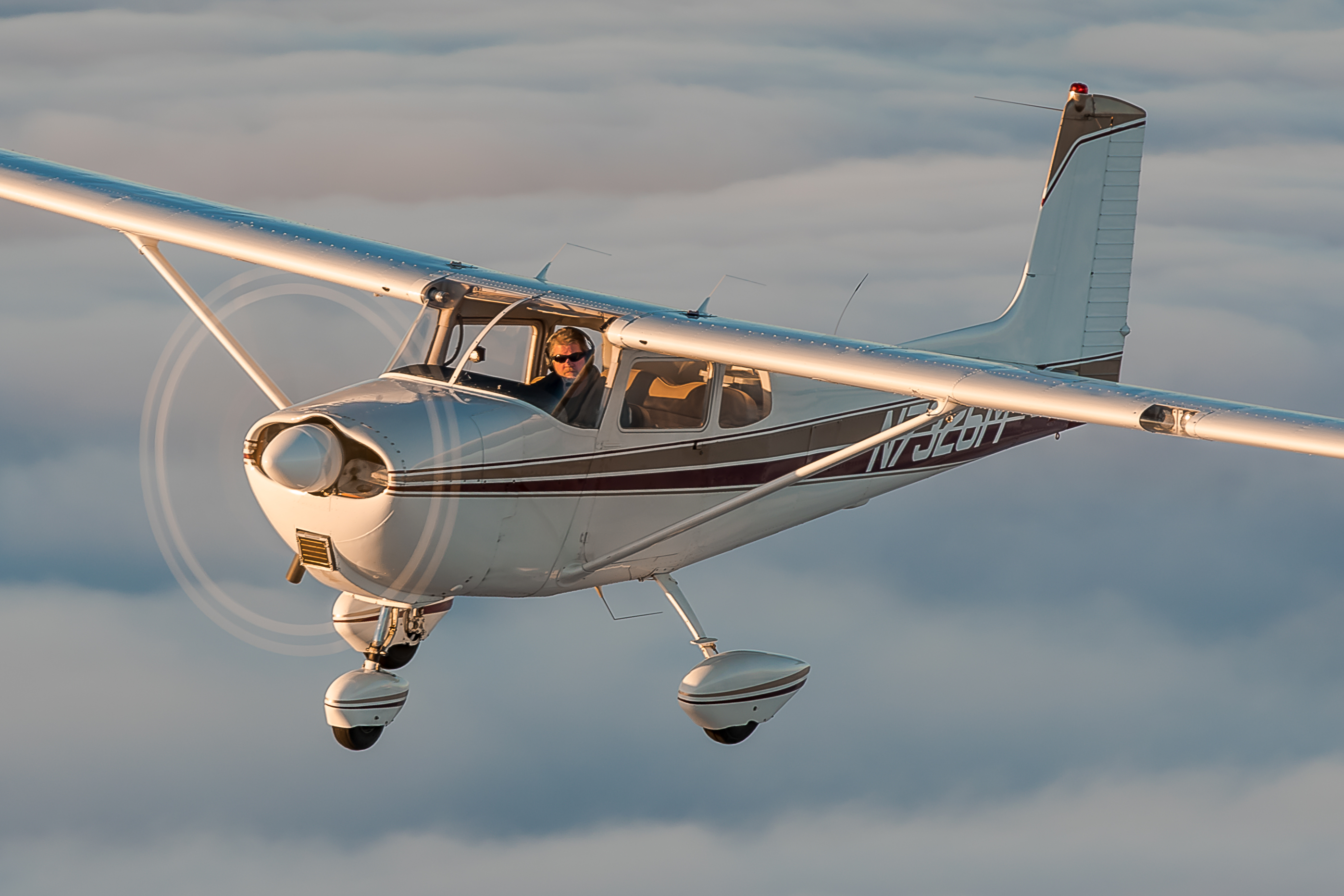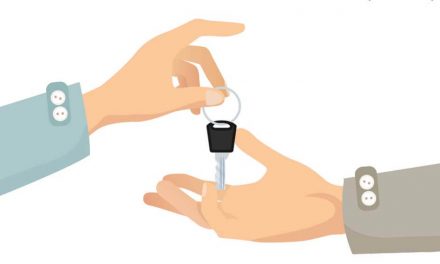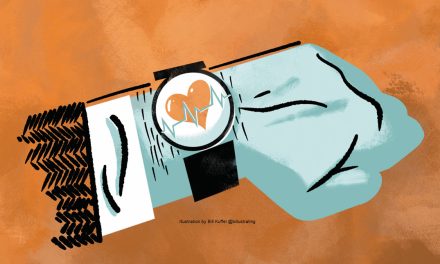When I think about the term “affordable flying,” I think about an old Kenny Rogers song. There was some line that said, “know when to hold them and know when to fold them!” And sometimes you must know when to sell them! Not many of us like to sell an aircraft, especially if we are not replacing it.
But sometimes it is necessary. And selling an aircraft is an art form in itself. There are unique things that take place that many people have never heard of. And it can be a financial disaster for both the buyer and the seller. A little preplanning helps. To start, let’s look at the various routes the owner can take when it comes time to sell an aircraft. Each one has advantages and disadvantages, which means that the individual sellers will have to make their own decisions as to which is better for them.
Sell or trade?
One of the first things to consider if you are selling your aircraft is whether you are planning on getting another aircraft. Some people sell their current aircraft and get completely out of aviation. In those cases (whatever the reason: health, financial, etc.), trading is not a viable option. But for those who want to stay in the air, trading might be the best place to start.
Finding an aircraft broker or dealer is usually the easy part. Finding a dealer that has an aircraft you want to trade for is harder. And finding a dealer close to home (with an aircraft you want to trade for) can be almost impossible. And by the way, you still must find an aircraft that is what you want. Just because they have the same model you want in stock, doesn’t mean it will be the one you want to buy.
One thing is for sure — dealers are in the business of buying, selling, and trading aircraft to make money.
Like a car dealer (or any product for that matter) they plan on offering their aircraft at a retail price and giving you a trade-in value for yours that will allow them to make money. That is just how it is done. And that’s OK.
There is nothing wrong with making money in aviation. Sometimes a dealer trade can get you an aircraft you want and get rid of an aircraft you don’t want. “Get rid of” might be a little strong; let’s say you have an aircraft that has a tremendous amount of potential but needs work. Maybe the engine needs to be overhauled or the airframe needs to be refinished if you want to get top dollar for it. As an owner (not a mechanic) a total refurbishment can be quite expensive, and it could substantially increase the cost of the aircraft. This increase might be high enough that it becomes unsellable.
On the other hand, a dealer might need a winter project for their shop. If the dealer has the ability to do the work, it’s usually at a lower cost than the owner would have to pay. Because of this “built in discount,” they can offer the seller a better trade-in value and still have the opportunity to make a few bucks when the aircraft is resold.
Downside to dealers
As with any dealer arrangement, you probably won’t get as much money for the aircraft as you would selling it yourself. But that’s not the whole picture. Many an owner has thought they can make more money by selling their airplane on their own. But remember, personal sale means the owner has to do the advertising, answer the phone, show the aircraft, send the pictures, etc. The extra financial expenditures and the time it takes to sell ends up coming out of the potential profit after the sale. It’s no surprise that the typical seller actually ends up making less money on the sale if they sell it themselves. And often they end up advertising the aircraft for a longer period of time than a dealer would.
Owners often feel that the dealer is making too much money on the trade, but the point to remember is if the seller is comfortable with the trade and the numbers don’t seem too out of range, it’s probably a good deal.
Selling to a dealer without a trade will lower the price substantially. A dealer has no way to put “blue sky” or unrealized profit into your aircraft if they can’t take advantage of the other aircraft they’re selling to you. So, the outright cash sale can put the dealer at a higher risk (the dealer is hoping the price they paid is low enough to allow them to make money on the resale) and pay the seller typically a low wholesale or below wholesale price.
To broker or not to broker
Another option would be to use a dealer as a broker. This arrangement would allow the broker to sell your aircraft without having to invest any money into the aircraft. The seller maintains ownership and is responsible for the fuel, maintenance, and insurance; if the broker sells the aircraft, they make a commission.
There are two standard arrangements: exclusive and non-exclusive. In the exclusive arrangement, the broker has control of the aircraft and offers it for sale. If the owner finds a buyer, they still need to go through the broker. This arrangement usually requires that the broker have the aircraft at their facility, and they manage all aspects of the sale.
A non-exclusive arrangement allows the owners to maintain control, and often possession, of the aircraft while the broker attempts to market the plane. This arrangement allows the broker to make a few dollars on the sale, but the owner often has to deliver the aircraft for the showing or demo flights (depending on the location of the broker and buyer). Non-exclusive also means that if the broker finds a buyer and presents them to the seller, they are due their commission. If the seller finds a buyer on their own (and they have never talked to the broker) there is no commission due. This is a little easier for the seller because they maintain control of the aircraft.
Not all brokers use the same formula to establish the commission or seller’s fee. The seller can agree on a price for the aircraft and pay the broker, at the time of the sale, an established percentage of that price. Or the seller can give the broker a minimum price to sell the aircraft for and the broker is allowed to keep any money over that minimum price as their broker fee. It’s not surprising to see both variations from the same broker. It all depends on the aircraft, the market, and the expected sale price. Also, there are many variations of these broker arrangements.
Sell it yourself
For sale by owner has worked for cars and homes and it will work for aircraft, as long as you know the limits. Since selling an aircraft is often a cross-country affair there are a few more things to consider. Marketing methods, escrow accounts, pre-purchase inspections, and delivery details are just a few. When a broker or dealer sells the aircraft, they usually take care of these items for you. But when the aircraft is for sale by owner the deposits, demo flights, title transfer, and the associated risks and problems are the seller’s responsibility.
For some reason, most buyers figure the seller (owner) will negotiate more than a dealer or broker. Buyers also expect the owner to establish a lower asking price because there is no third party involved, and often the buyers expect the owner to take personal checks and pay more of the delivery costs. In other words, many buyers try to take advantage of the seller’s lack of experience.
Important steps
Whatever method is used to sell the aircraft there are a couple of things to do first: establish a fair market price, work up a book value and a “trade” value (price comparison of the same model in the aviation classifieds), decide how to market the aircraft, and decide the sale method — trade, broker, dealer, or for sale by owner.
In today’s market, all methods should use some form of online advertising. Online advertising has become important for the buyer and the seller because it offers the opportunity to post color pictures of the aircraft for immediate review. Potential buyers can preview and look at an aircraft and decide if they are really interested.
I can remember when we used to send pictures through the mail. The seller needs to take advantage of all the advertising mediums available and cover as much territory as possible. It doesn’t matter if it is a broker, dealer, or for sale by owner, if no one sees the ad or knows the aircraft is for sale, it won’t get sold. And since selling an aircraft can be very emotional, why make it any harder than it needs to be?






